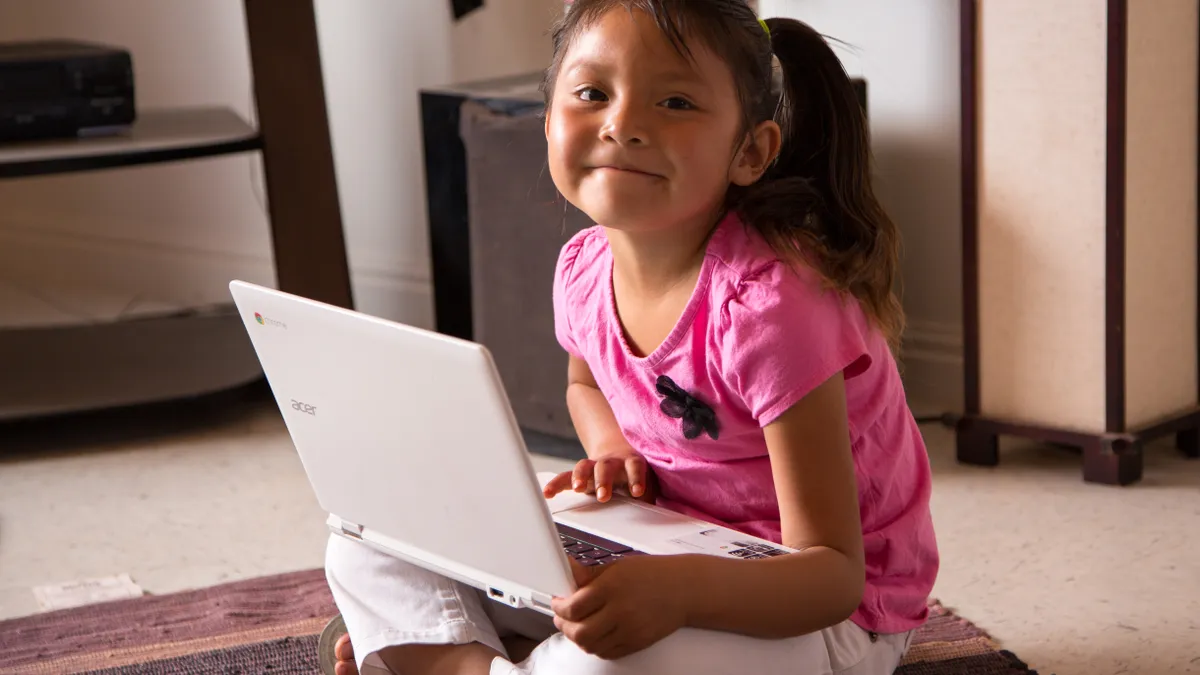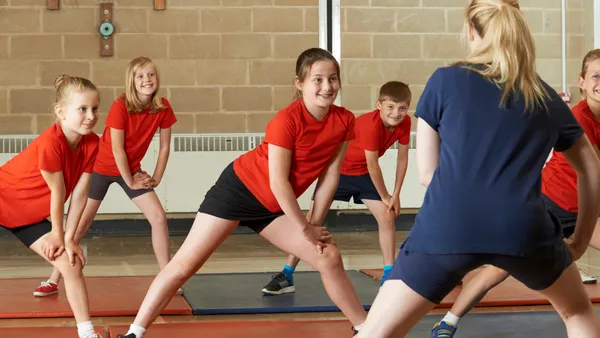Dive Brief:
- There are ways educators can set up their digital classrooms to optimize the environment for preschool-aged children, with digital platforms and tools such as Zoom and Google Meet, for instance, allowing students to connect with each other and not just listen to their teachers, educator Maddi Bodine writes for Edutopia.
- Bodine, an early childhood special education teacher, likes to use familiar objects and routines with her students, from daily songs to puppets, and includes families in activities in addition to, occasionally, service providers such as speech therapists. Additionally, she suggests holding individual video meetings with new students to calm nervous children and families.
- Likewise, Bodine recommends teachers prepare for the possibility in-person classes this fall may have to revert back to online learning, and be ready to talk with students about that shift if it happens so they understand but still feel safe. Above all, she encourages all educators to try and enjoy the time spent online so their students feel comfortable, too.
Dive Insight:
A virtual learning space can prove a difficult environment for any child, as the past few months have shown, and that can be more so for preschoolers. Yet the ongoing coronavirus pandemic means remote learning will almost surely continue for millions of students, including those just beginning their educational journeys, for this school year. While children’s television like “Sesame Street” has been successful at delivering mini-lessons on screens, these shows tap out at 30 minutes — not the length of a school day.
As a result, educators are looking for ways to support their youngest students in virtual learning spaces. From one-on-one video calls to sending home educational games and books, through grab-and-go meals, these are all ways to bring a more personal touch to students who are working remotely, far from their teachers and classmates.
Another suggestion, from the Johns Hopkins School of Education, is to get students moving around before class time starts online. Having children move their bodies, and getting some exercise in before a virtual class, may help them focus.
Asking families to dedicate a specific area for classes may be helpful, as well, along with keeping that area free from other distractions like a parent’s smartphone or toys, suggests Common Sense Media. Additionally, Chicago Public Schools recommends children be offered breaks, even every 30 minutes, for the 2020-21 school year. And the Maine Department of Education believes maintaining a regular routine and schedule can help children know when school time has started.






 Dive Awards
Dive Awards





